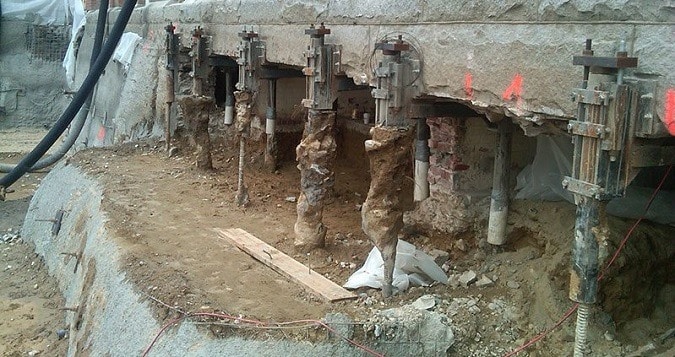Types of Concrete Foundations
August 28, 2023
Foundation is one of the most vital aspects of building. An ideal type of foundation will evenly disperse pressure across its entirety to protect from movement in your house.
There are various kinds of concrete foundations, and homeowners should select one suited to their climate for maximum performance.
Monolithic Slab
Monolithic slab foundations Underpinning Melbourne are single pieces of concrete that serve both as the floor and foundation for your home, lasting up to 50 years with proper installation. Installation times can be quicker than with traditional basements, as well as being more cost-effective over time.
Footings for this foundation type are typically constructed at a similar depth as monolithic slabs, eliminating the need to add much dirt during construction. A thicker perimeter area may still be necessary in order to prevent frost heave.
This method of construction employs 8 mm, 12 mm and 16 mm diameter bars as wall reinforcement and requires cover blocks to keep an appropriate distance from them. After curing concrete has hardened for seven days, water is sprinkled onto it periodically in order to increase durability and strength.
Conventional Perimeter
Footings transfer the weight of load-bearing walls of a building to firm ground below, as well as prevent moisture seepage into structures which could otherwise lead to mold and mildew issues.
Foundation wall type, thickness and soil conditions all affect which type of concrete footing will best support a structure. A pad or spread footing features a wider base than its top, helping disperse weight across more of the soil surface and reducing chances of sinkage into the earth.
Other types of foundations include drilled caisson, open caisson and pile foundations. Pile foundations consist of long, thin cylindrical pieces pushed deep below the surface into stable soil in order to support massive structures; they’re commonly seen used in flood zones or on steeply sloped sites to lift structures above flood levels or other adverse conditions.
Stepped Footing
Stepped footing is an inexpensive form of isolated footing used in areas with poor soil bearing capacity. Composed of steps of concrete that are interlocked one upon another, its main aim is to prevent corrosion of columns coming in direct contact with soil below and properly transmit load onto earth.
Stepped footings are cost-effective and straightforward to install foundations, offering convenient construction. But due to limited load capacities and potential uneven settlement, they should only be used with caution if constructed correctly. To combat this issue, a concrete raft may be added on top of stepped footings so as to distribute load more evenly, thus preventing excess movement. Stepped footing foundations are commonly utilized by small to mid-sized structures in areas with unstable soil that requires additional support.
Concrete Block Wall
Concrete block walls (also referred to as Concrete Masonry Units or CMUs) can be stacked to form retaining walls and foundations at an affordable price, often within days. Their construction also saves time compared to poured walls.
Rebar can be added for extra support if required; these blocks make an excellent choice for structures subject to high wind speeds or underground lateral water pressure.
Hollowed blocks feature hollows which help reduce weight, making them easier to handle for construction crews and offering thermal insulation that can lower home energy bills. Furthermore, this block type is easy to assemble which saves on labor expenses; they’re often cheaper than poured walls as no wet concrete needs to be formed at the job site.
Concrete Pier
Concrete piers are an effective choice for homeowners in humid climates looking to repair foundation issues, providing stability to homes while protecting them from potential water damage that could potentially be catastrophic for any structure.
Concrete piers offer many advantages over other forms of support such as steel or masonry piers in terms of both mortar deterioration and tilting difficulties, including being monolithic with high tolerance to compressive forces as well as not rusting when exposed to moisture.
These piers are typically precast or cast-in-place and known by various names such as foundation piers, shed piers or sub piers. A drilled caisson is an even larger compressed member with an axial load at its top end and reaction at its base; one type is described by John Sturgis as “an enormous metal tube with an axial load at its top and reaction at its base”.
